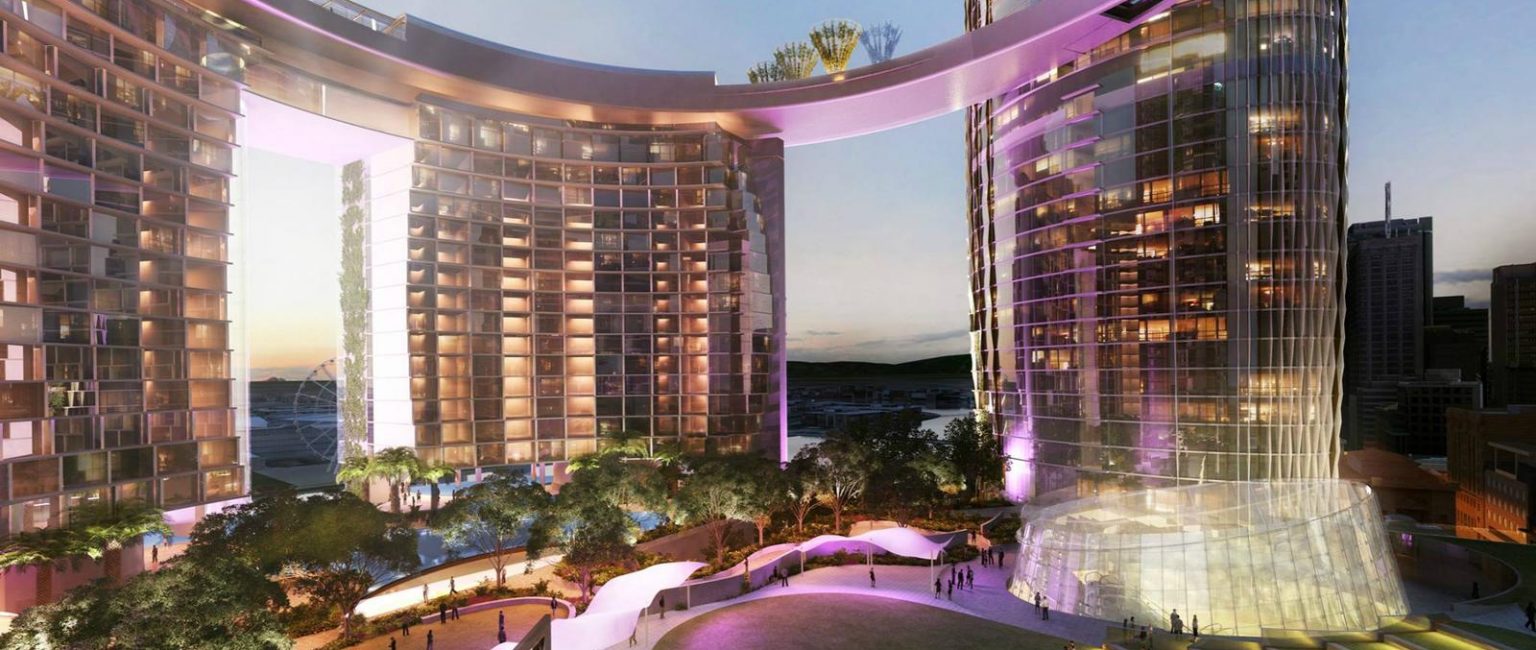Queen’s Wharf Brisbane branded anti-homeless

Queensland’s $3 billion Queen’s Wharf Brisbane casino is just one of a spate of developments accused of promoting hostile architecture.
The planned casino and lifestyle complex came under fire late last year after putting forward designs that prevent people experiencing homelessness from sleeping on benches and seats.
The development’s Crime Prevention Through Environmental Design Report submitted to the state government stated that “furniture installed in the area should have features that minimise anti-social behaviour.”
Commercial Insights: Subscribe to receive the latest news and updates
“This may include discreet solutions on seating and low walls that minimise use for skateboard tricks, and fixed armrests that prevent sleeping on the furniture.”
Greens councillor, Jonathan Sri, calls the furniture design “disgusting” stating that “public spaces should be for everyone – not just the mega-rich,” and calls upon Brisbane Central MP Grace Grace to ensure no development on state government land included hostile architecture.
“Rough sleepers are extremely vulnerable and are among the most likely members of our society to be victims of crime,” Sri told the Brisbane Times.
“When councils and governments discourage them from using highly visible public spaces, they end up sleeping in unsafe areas on the margins.”
The new development will occupy 12 hectares of government-owned land and potentially reclaim 15.3 hectares of the Brisbane River.
Brisbane Central MP Grace Grace responded to the allegations by holding a public information session about Queens Wharf where local resident expressed overwhelming support for the project.
“This emphasis on public space helped to set the winning consortium’s bid apart, and I know that it’s something that local residents find hugely exciting,” she says.
A spokesman from Destination Brisbane Consortium says: “The development seeks to cater for all user groups, with landscaping and features at the river edge including places for people to sit and enjoy this part of the city”.

An artist’s impression of the planned casino and lifestyle complex, Queen’s Wharf Brisbane. Picture: Queen’s Wharf Brisbane.
The concept of “hostile architecture” – designs that aim to prohibit certain behaviours and exclude groups of people – isn’t new. The coercive design of public spaces has always been a point of contention for architects, local councils and human rights organisations.
James Petty, who recently completed a PhD in Criminology that looked at how homelessness is regulated and criminalised in Melbourne, believes that the design features described in Queens Wharf’s development application are problematic.
“Anything that targets specific uses that are characterised by marginalised groups, like people who lie down on benches – yes, I would say that definitely constitutes hostile architecture,” Petty told ArchitectureAU.
The Queen’s Wharf development isn’t the first instance of hostile architecture in Australia.
In 2015, Western Australia’s Department of Culture and Arts was forced to turn off a controversial sprinkler system used to prevent homeless people bedding down in the inner city.

The Queen’s Wharf Casino development has come under fire for putting forward designs that prevent people experiencing homelessness from sleeping on benches. Picture: Getty.
And in 2013, NSW’s RailCorp was forced to abandon their idea of using Mosquitos – devices that emit a high-frequency buzzing noise only people aged 13 to 24 can hear – to deter graffiti artists.
One of the most visible examples of hostile architecture are spikes which are used in front of apartment buildings and on public benches to deter rough sleepers.
The local Bournemouth Borough Council in England recently removed its anti-homeless bars on its town centre benches after a public outcry.
British rapper Professor Green, who presented a BBC Three documentary, Hidden and Homeless, which focuses on youth homelessness, took pictures of the benches and shared them on social media, sparking a petition signed by more than 20,000 people who accused the council of “turning their back on the homeless”.
He says: “What’s the message here? ‘Hey you poor sods with no safety net … you won’t have the ‘comfort’ of this bench to sleep on! Ha!”
“Again, nothing done to tackle the problem, just something to make it more invisible so we can pretend it isn’t happening.”
This article from first appeared as “Brisbane’s Queens Wharf development accused of anti-homeless architecture”.







